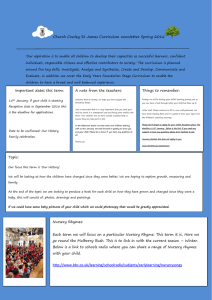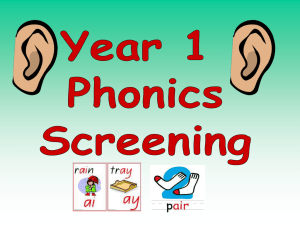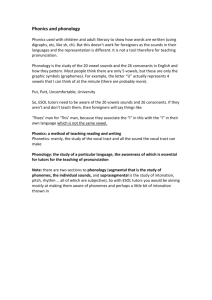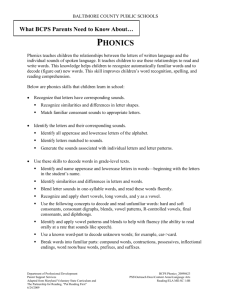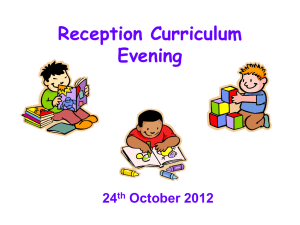Reading Curriculum - Colleyville Christian School
advertisement
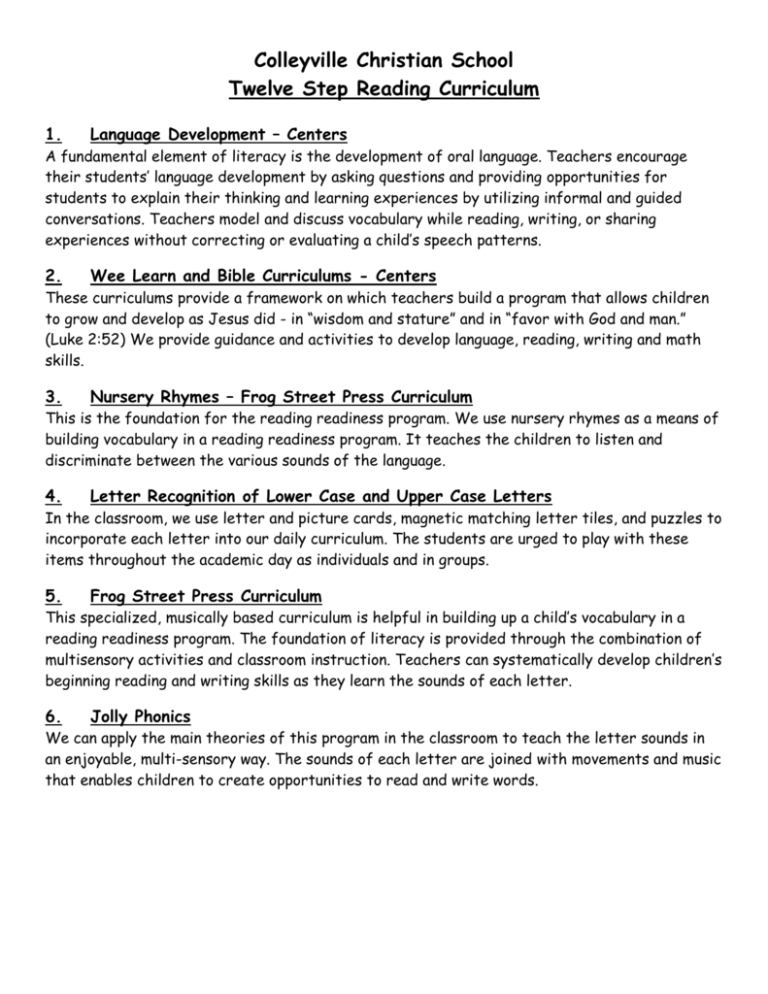
Colleyville Christian School Twelve Step Reading Curriculum 1. Language Development – Centers A fundamental element of literacy is the development of oral language. Teachers encourage their students’ language development by asking questions and providing opportunities for students to explain their thinking and learning experiences by utilizing informal and guided conversations. Teachers model and discuss vocabulary while reading, writing, or sharing experiences without correcting or evaluating a child’s speech patterns. 2. Wee Learn and Bible Curriculums - Centers These curriculums provide a framework on which teachers build a program that allows children to grow and develop as Jesus did - in “wisdom and stature” and in “favor with God and man.” (Luke 2:52) We provide guidance and activities to develop language, reading, writing and math skills. 3. Nursery Rhymes – Frog Street Press Curriculum This is the foundation for the reading readiness program. We use nursery rhymes as a means of building vocabulary in a reading readiness program. It teaches the children to listen and discriminate between the various sounds of the language. 4. Letter Recognition of Lower Case and Upper Case Letters In the classroom, we use letter and picture cards, magnetic matching letter tiles, and puzzles to incorporate each letter into our daily curriculum. The students are urged to play with these items throughout the academic day as individuals and in groups. 5. Frog Street Press Curriculum This specialized, musically based curriculum is helpful in building up a child’s vocabulary in a reading readiness program. The foundation of literacy is provided through the combination of multisensory activities and classroom instruction. Teachers can systematically develop children’s beginning reading and writing skills as they learn the sounds of each letter. 6. Jolly Phonics We can apply the main theories of this program in the classroom to teach the letter sounds in an enjoyable, multi-sensory way. The sounds of each letter are joined with movements and music that enables children to create opportunities to read and write words. 7. Abeka Phonics – A Christian Phonics Program The scope and sequence of this program covers reading phonics. The classroom will utilize each field of study to extend their knowledge of letters. the recognition of a name, sound, or picture of the long and short vowels and consonants the sounds of blends and one-vowel and two-vowel words the reading of sentences and stories with one-vowel and two-vowel words. 8. Word Families Children can become excellent readers by learning to recognize patterns in words that they see often. They will use word families to decode unknown words – the letters that they know in one word can be helpful in learning another word with similar letters. For example, if a little reader knows the word “at”, and knows the letter “c” they can easily recognize and learn the new word “cat”. From that point, it is a simple progression to the words “bat”, “sat”, and “hat”! 9. Configuration Clues Children will advance as readers and writers when we teach them the distinct shapes of letters and words. Knowing the various outlines and profiles of letters can help them to make out words much faster. 10. Dolch Sight Words We will spend time practicing words that do not follow the usual word rules so that children can develop their reading skills. A sight word is a design or a configuration that allows children to see and know new words easily. 11. Choral Reading – Children will read a book together as a group. Dramatic Play – These activities consist of un-memorized lines that enable children to express themselves. Puppets – These toys often help shy children to engage socially with others. Commercial Games – Children naturally enjoy games, therefore, they are tend to show interest. As they play, they develop their vocabulary, sight words, and word structures. Flannel Board – This activity is great for children with shorter attention spans. 12. Individualized Reading Program Teachers work in small groups and individually with each student using leveled reading books to develop their literacy. These books are sent home weekly so that the parent or guardian can help their child learn and grow. (Leveled Readers, Creative Teaching Press, Newmark Learning Sight Words, Lakeshore Vowels and Rhymes, Reading A-Z, Lakeshore Alphabet, and Harcourt are all books that we provide and take advantage of while teaching.)




